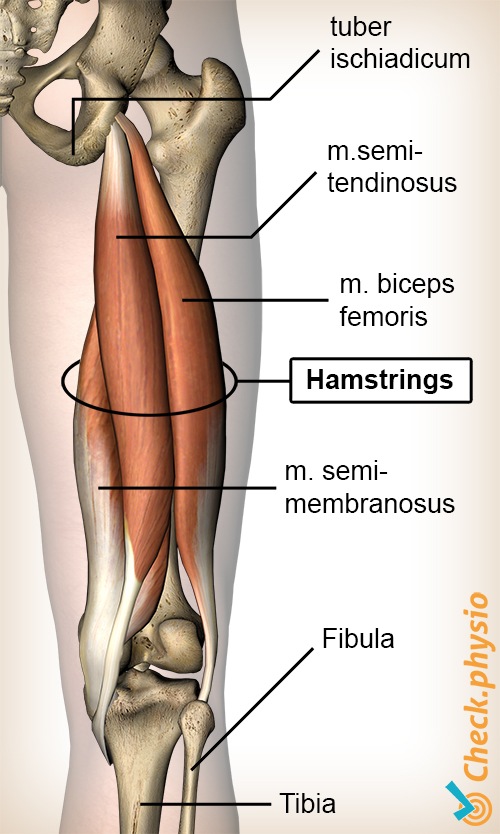- Conditions
- Hamstring injury
Hamstring injury Chronic hamstring pain
Introduction
Hamstring injuries often develop acutely. This means that the pain occurs at one moment when you suddenly increase power or speed. If this is not the case and the symptoms developed gradually, then it is referred to as a non-acute hamstring injury. This can become chronic.
More information about the acute form can be found in the article about acute hamstring injury. We will discuss non-acute hamstring injury below.

Description of condition
The "hamstrings" is a collective term for a group of 3 muscles that are located at the back of the thigh. These are the "semimembranosus", the "semitendinosus" and the "biceps femoris". Their functions include flexing the knee and extending the hip. In a hamstring injury, one or more of these hamstring muscles are affected.
Prolonged strain of the hamstrings may result in strain. Repeated stretching and pulling force on the muscle fibers may result in small tears in the muscle. These muscles are particularly susceptible to this if training is not built up gradually, or if the warm-up is omitted.
Damage to muscles usually occurs at the weakest point in the muscle. This is the part where the tendon tissue flows into the muscle tissue. In the image, this is the transition from white (tendon tissue) to red (muscle tissue).
Cause and history
A chronic hamstring injury involves pain that gradually becomes worse. The symptoms usually develop as a result of lengthy repetition of walking/running movements, as when jogging. This injury is common in sports such as marathons and triathlons.
Signs & symptoms
The symptoms are less pronounced than for an acute hamstring injury. There is a nagging pain around the buttock and to the rear of the thigh. Sometimes the pain extends toward the rear of the knee. The exact location of the symptoms is often hard to pinpoint. The following symptoms may be present:
- Pain when bending the knee against resistance.
- The pain is felt during or after running.
- Stretching the hamstrings may be painful.
- Cramping along the rear of the thigh.
- Loss of strength.
- As the hamstrings attach to the sitting bones, the symptoms may also be experienced while sitting as this places pressure on the damaged structures.
Diagnosis
A non-acute hamstring injury is more difficult to diagnose than the acute form. Following a physical examination, the physiotherapist can offer you advice and set up a treatment plan, if necessary.
Treatment and recovery
The use of eccentric strength training is becoming an important part of the treatment of hamstring injuries. This means that training takes place in a way that means the muscle lengthens instead of shortening during strength exercises. There are many indications that this has a positive effect on recovery and the structure of muscle and tendon tissues.
Exercises
If you have a hamstring injury it is important to train the hamstrings correctly. Take a look here at the online exercise program with exercises for hamstring injuries.
More info
You can check your symptoms using the online physiotherapy check or make an appointment with a physiotherapy practice in your locality.
References
Hibbert, O., Cheong, K., Grant, A., Beers, A. & Moizumi, T. (2008) A systematic review of the effectiveness of eccentric strength training in the prevention of hamstring muscle strains in otherwise healthy individuals N Am J Sports Phys Ther. 2008 May;3(2):67-81.
Heiderscheit, B.C., Sherry, M.A., Silder, A., Chumanov, E.S. & Thelen, D.G. (2010) Hamstring strain injuries: recommendations for diagnosis, rehabilitation and injury prevention J Orthop Sports Phys Ther. 2010 Feb;40(2):67-81.
Petersen, J. & Hölmich, P. (2005) Evidence based prevention of hamstring injuries in sport Br J Sports Med. 2005;39:319-323.
